There are so many types of freshwater aquarium snails and each comes with its own pros and cons. Under the right conditions, snails can be your best friends working nonstop to keep your tank clean.
Choosing the right type of snails for your aquarium will let you have your tank in pristine condition without having to worry about snail overpopulation. This makes choosing the right snail for your tank a little tricky. So we created this guide to let you choose the right type of freshwater snail for your aquarium.
In the aquarium world, there are people who hate having snails in their tanks and some like us who can not set up a tank without having snails in it. Snails are amazing cleaning species that can live with most fish. They will constantly search for uneaten fish food and algae growing on the glass.
An aquarium is a tiny ecosystem that needs different living organisms to create a balanced cycle of life in the tank. There are 3 main issues that snails will solve in this enclosed ecosystem. These 3 main benefits of snails are:
- Snails will eat dead plants and dead fish which can cause diseases.
- Snails eat the leftover fish foods that can pollute the tank.
- Snails will eat algae that naturally grow in an aquarium.
If you have a well-cycled and balanced tank and the right type of snails you will never need to feed your snails. They will find enough food in your tank to sustain a small number of snails. This makes them super easy to care for.
Types Snails for Aquarium
Here are our top picks of freshwater aquarium snails that you can add to your tank.
Nerite Snail
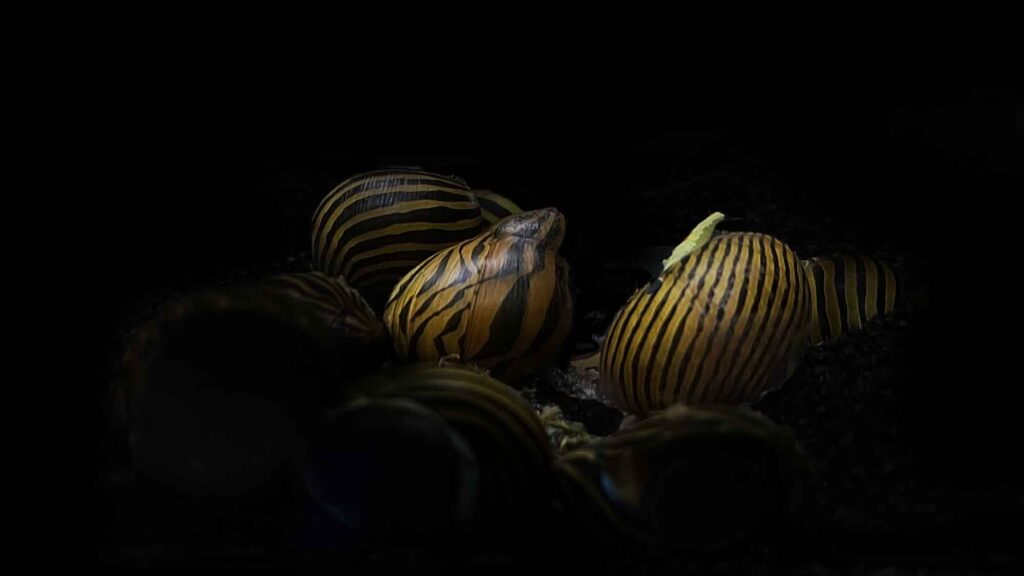
Nerite Snails are extremely beautiful snails that are also one of the best freshwater algae eaters. They are super hardy species that can tolerate most water parameters.
But the main reason these snails are famous is the fact that they do not breed in freshwater. This makes them a perfect choice for those who are looking for a beautiful snail that doesn’t take over their tank.
These snails have many different types and morphs with some of the most beautiful shell patterns. Some neurites come with physical structures on their shells while others develop beautiful colors and patterns. To learn more about this snail visit: Care Guide for Nerite Snails
Mystery Snail

The Mystery Snail is one of the larger types of snails in the aquarium world. They grow super fast and can make a great pet snail in a bowl or with other fish in a tank. They are great algae-eating machines that will work nonstop to keep your tank clean.
These Snails lay their eggs out of the water and in a large cluster which makes it easy for you to spot and prevent the breeding cycle if you don’t like to have more snails.
The only downside to these snails is that some individuals seem to develop an aptitude for live plants. While this is a controversial claim made by some aquarists, in our experience they will only eat live plants if they can’t find enough food. So as long as you make sure you are feeding them daily you should not see any of these snails going after live plants.
Because of their large size, these snails need more food compared to other snails. The algae and leftover foods are not enough to keep these snails full so make sure you throw a little more sinking food for your snail. To learn more about this snail visit: Care Guide for Mystery Snail
Apple Snail
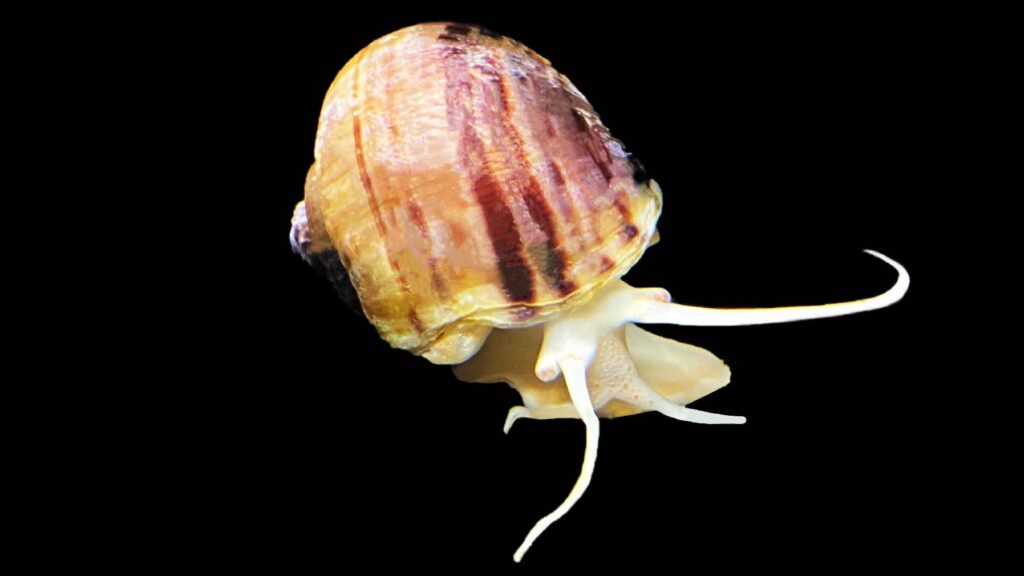
Apple Snails are a great algae eater species that you can have in your tank. These snails grow to a responsible size so they will constantly eat any available food in the tank. This makes them a great cleaning snail for your aquarium.
Unlike some other snails on this list, if these guys don’t get enough food they might go after live plants. So it is important to make sure that these snails are well fed at all times.
The good thing about these snails is that they lay their eggs out of water. This makes it easy to control their population or completely prevent the eggs from hatching. To learn more about this snail visit: Care Guide for Apple Snail
Assassin Snail
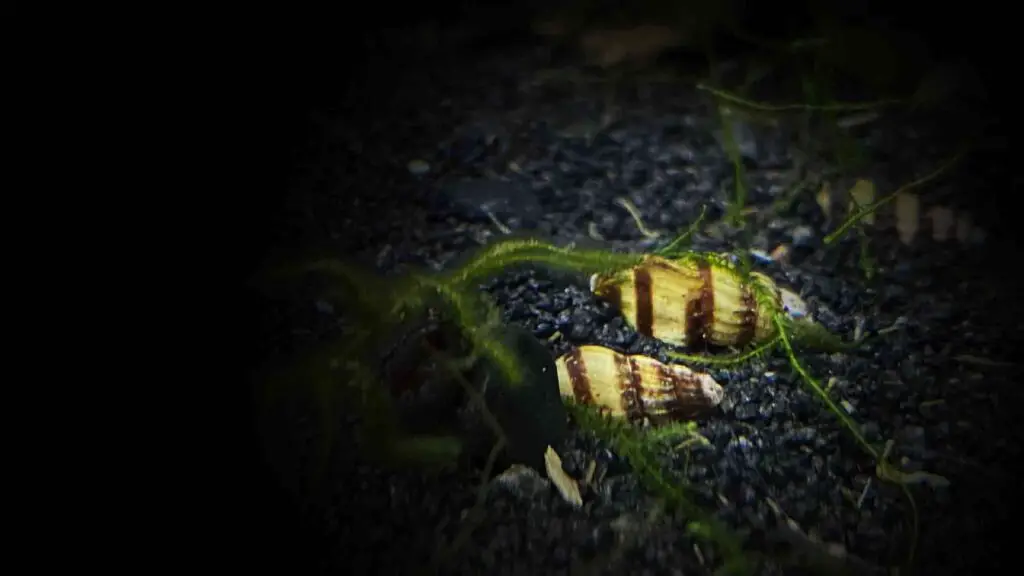
These snails are one of the few carnivores and predatory types of snails you can get for your tanks. This is the main reason most people bring these guys home. They will hunt other snails and keep their population under control. At the same time, Assassins do not overly reproduce to become a problem themselves.
This freshwater snail is at the same time one of the most beautiful types of snails that will also stay small. They have beautiful black and yellow stripes that because of this some call them bumblebee snails.
Because of their small size, the fact that they hunt their food makes them super easy snails to keep. But you will also have to feed them if you have a low number of pest snails in your tank. They will happily eat any carnivore pellets you give them. To learn more about this snail visit: Care Guide for Assassin Snails
Rabbit Snail

Rabbit Snails are one of the largest types of freshwater snails that can grow up to 5 inches. But unlike other snails, they grow a cylinder-shaped spiral shell that keeps their body mass protected.
This freshwater Aquarium Snail will constantly look for algae grown in the tank without harming other inhabitants. Because of their hard shell not, many other species will try to hunt or hurt these guys. Their large shell will also make them move very slowly.
These snails are coming from super clean waters in the wild so you will need to make sure your tank parameters are in their favor.
Along with their large size and their peaceful nature, these snails will not reproduce as fast as some other snails in this list which makes them a desirable type of freshwater snail in any tank. To learn more about this snail visit: Care Guide for Rabbit Snail
Bladder Snail
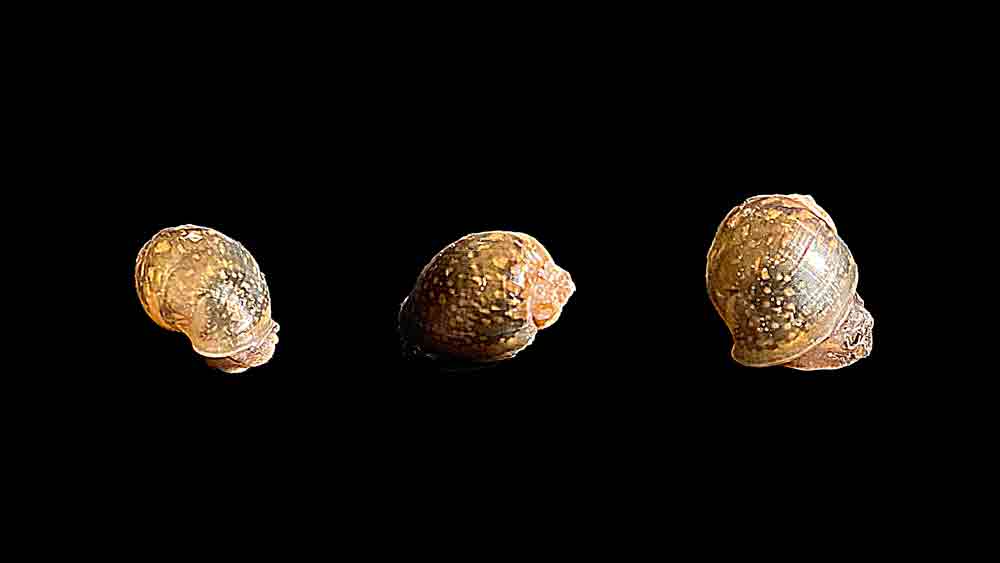
Bladder snails are commonly mistaken for pond snails but these two types of snails are different species. Bladder snails reproduce rapidly which is why most people consider them pest snails.
They usually get introduced to the tanks by new plants or decorations that have been in a tank in presence of bladder snails. These snails lay eggs underwater in a transparent cluster that is hard to see. This is why they are known as pest snails.
These snails are capable of living in cold water aquariums so they can be a great cleaning crew if you have a cold water tank. They are one of the best cleaning snails if you have larger pea gravels as your substrate. These snails will crawl in the cracks and crevices in the tank and will find any leftover food. To learn more about this snail and how to prevent overpopulation visit: Care Guide for Bladder Snail
Ivory Snail
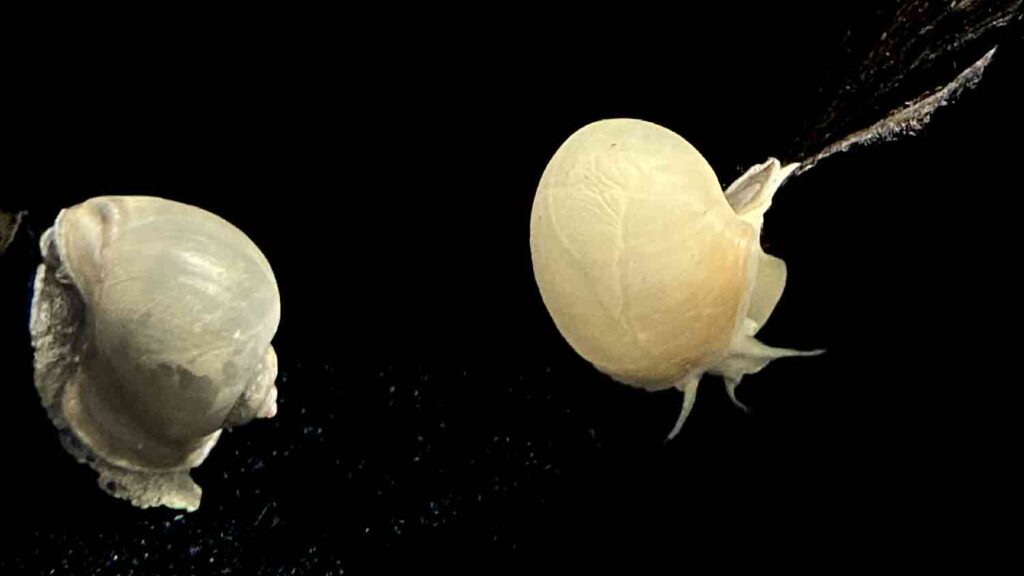
The Ivory Snail is a beautiful large snail that develops a beautiful ivory-colored shell (creamy white). Their body color is also pale and almost the same as their shell color. They are super easy to maintain and will eat almost anything you throw at them.
These snails are not as common in pet stores as other types of snails which makes them even more sought-after types of freshwater snails for aquarium owners. They grow large and fast and breed in large numbers.
Fortunately, they lay their eggs above water levels, this makes it easy to manage their population and prevent snail outbreaks in your tank.
They are great algae-eating machines that will never stop eating. If your tank runs out of algae you can feed them fresh vegetables like cucumber or any sinking fish food you might have.
Black Devil Snail
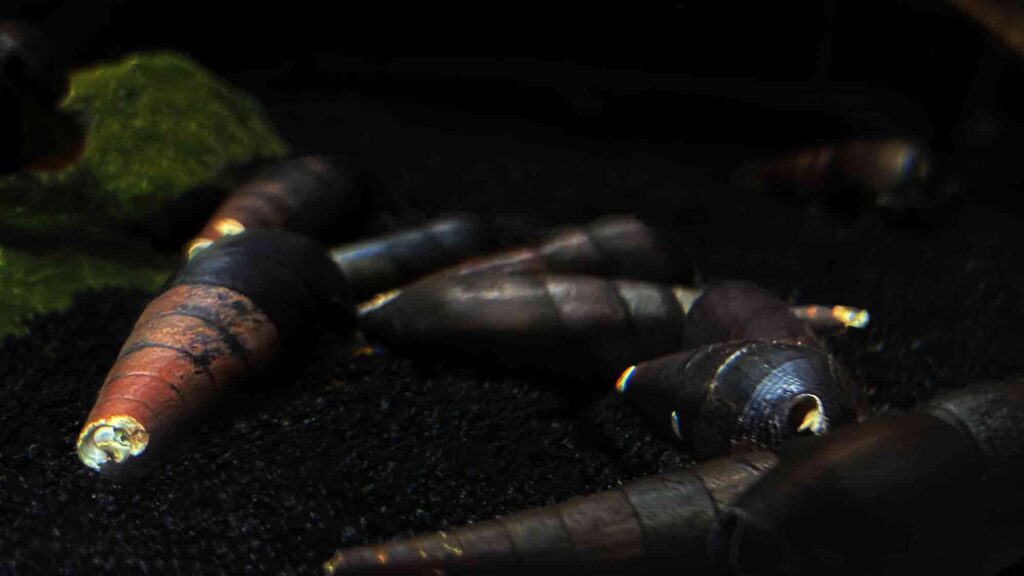
Black Devil Snail is one of the most unique-looking and beautiful types of aquarium snails. They have a smooth spiral cone-shaped shell that can grow to approximately 3 inches. Some individuals can even grow to 5 inches but it’s rare and not very common.
These snails are super slow breeders so it makes them a great choice for well-maintained tanks. Their large size makes them a point of attraction in any aquarium.
These snails will constantly scavenge for food and will not disturb other tank inhabitants. These snails are coming from super clean waters so make sure not to pollute your tank with leftover food.
Gold Inca Snail
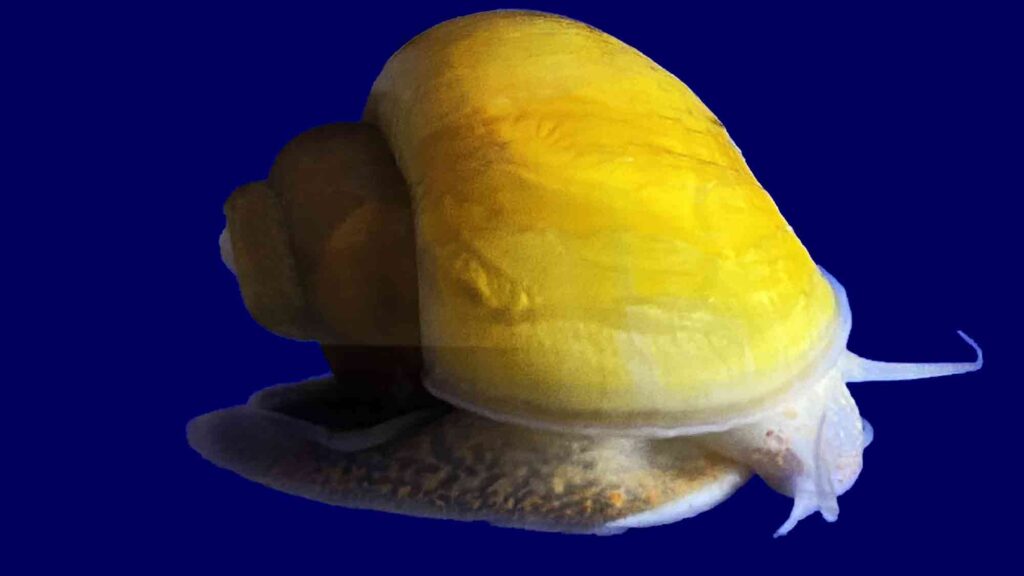
Gold Inca Snails (Pomacea bridgesii) are a variant of apple snails that are known for the gold color of their shell and body. These snails are also sold as Gold Mystery snails in some pet stores.
Same as Mystery snails, these snails are super easy snails to care for and will grow to a manageable size. The Gold Inca variant of mystery snails is giant gold nuggets that will continuously move around in your tank.
When they receive all the nutrients they need they will develop a beautiful golden yellow shell that will glow under the aquarium light. The Gold Inca Snail shares the same care requirements as other Mystery Snails. They are easy to care for species that will add beauty and functionality to your tank. To learn more about Gold Inca Snail visit: Care Guide for Mystery Snail (Gold Inca Snail)
Ramshorn Snail

The Ramshorn Snail is probably the most controversial snail when it comes to dividing aquarium snails into pests and pet snails. In our opinion, this snail is definitely one of the best cleaning crews you can have in your tank but many might consider them pests. This is because they usually get introduced to tanks after purchasing a plant.
Ramshorn Snails are known for rapidly breeding and taking over a tank but they will only do this if you have excess food in your tank. They only breed to the amount of food available in the aquarium. If you have the bad habit of feeding more than what your fish eat, it’s probably a good thing to have these snails.
If you find yourself dealing with a lot of ramshorn snails, it’s probably because there is too much food in your tank. Simply by eliminating food sources the snail population will decline. To learn more about this snail and how to prevent overpopulation visit: Care Guide for Ramshorn Snail
Malaysian Trumpet Snail
Trumpet Snails are small sand burrowing freshwater snails that some aquarists love and others hate. These snails reproduce super quick and this is why not many people like them.
We however love to have these snails in our sand aquariums. These snails solve one of the biggest problems that can occur in a sand substrate aquarium and that’s air pockets. In a tank without these snails, the food will eventually find its way down in the sand and start to rot which will cause ammonia gas pockets that will eventually get released to the water column and may kill your fish.
Having this snail in your tank will help you eliminate air pockets as these snails will burrow in the sand and eat any food that might be trapped in the sand. They are also nightcrawlers so when the lights are on they will go into gravel and you will not see them.
King Koopa Snail
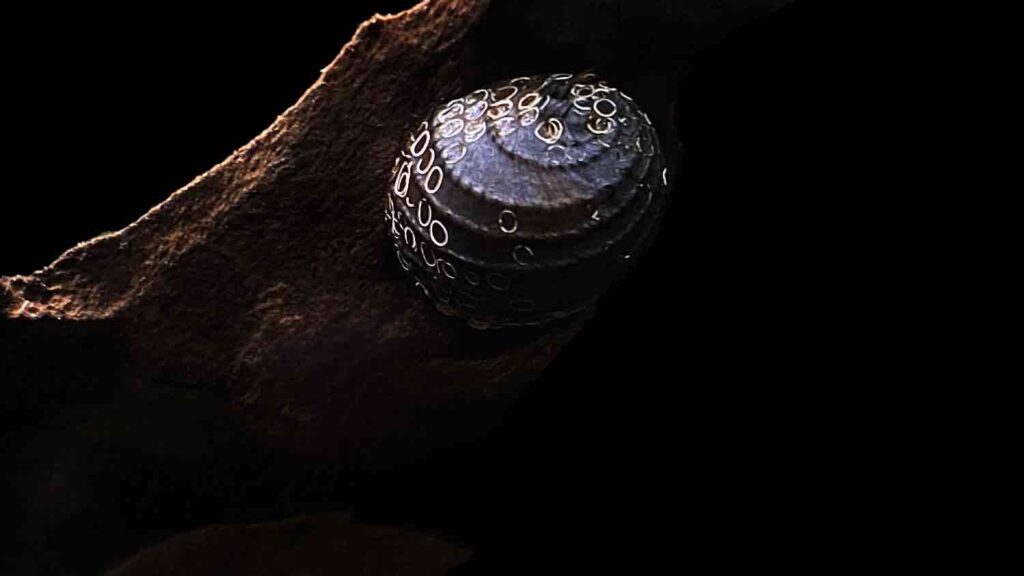
The King Koopa Snail (Neritina juttingae) or King Koopa Nerite Snail is a variant of Nerite snails that has gained popularity in recent years. This snail is not a very common snail and you might see them rarely in pet stores.
This Can be a snail that you can show it off to your friends as a rare snail in your collection. These shrimps share the same care requirements as the rest of Nerite snails. Our comprehensive care guide on nerite snails cover all the information you need on how to care for the King Koopa Nerite snail. To learn more about King Koopa Snail visit: Care Guide for Nerite Snails
Japanese Trapdoor Snail
The Japanese Trapdoor Snail is probably one of the rarest types of snails in the aquarium hobby. These snails are endemic to parts of Japan and are amazing snails for cold water aquariums.
The Japanese Trapdoor Snail can live up to 5 years this is why they are usually seen with algae grown on their shells. In the snail world, 5 years is a very long time and most snails live for up to 2 years.
Because of their ability to live in cold water and the fact that they are amazing algae eaters, they are known as one of the best snails in the fishkeeping world. Japanese Trapdoor Snails also like to eat fresh vegetables like cucumber and zucchini.
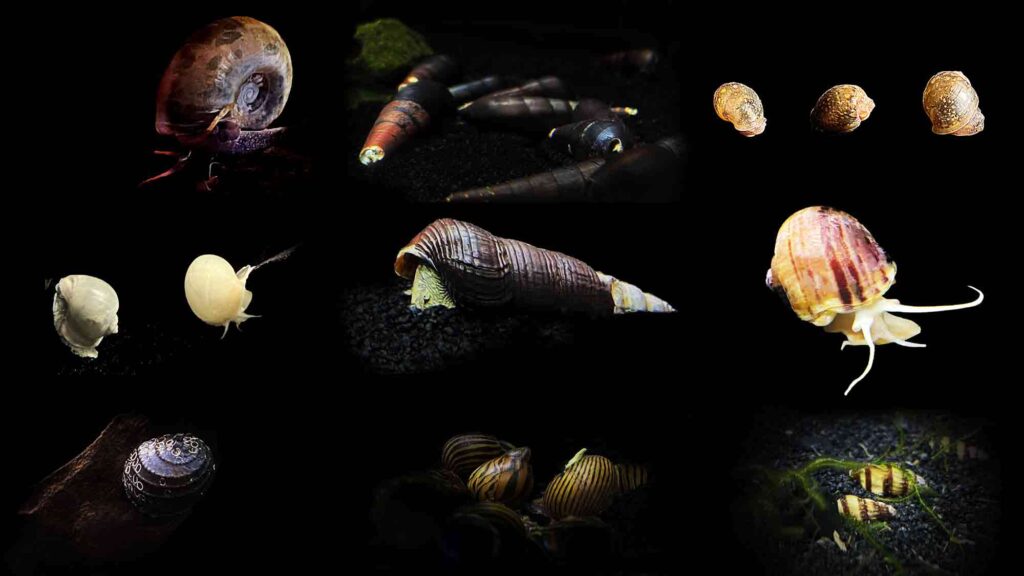
What Freshwater Snail Is Right For You?
When it comes to picking the right snail for your tank you should see what parameters your tank has and which snails are right for the parameters your tank has. If you have a well-established tank and are not feeding your tank more than what your fish needs then all these snails can make a good choice. But in the end, it’s all about what you want and what you need. We recommend starting with snails that don’t breed rapidly.